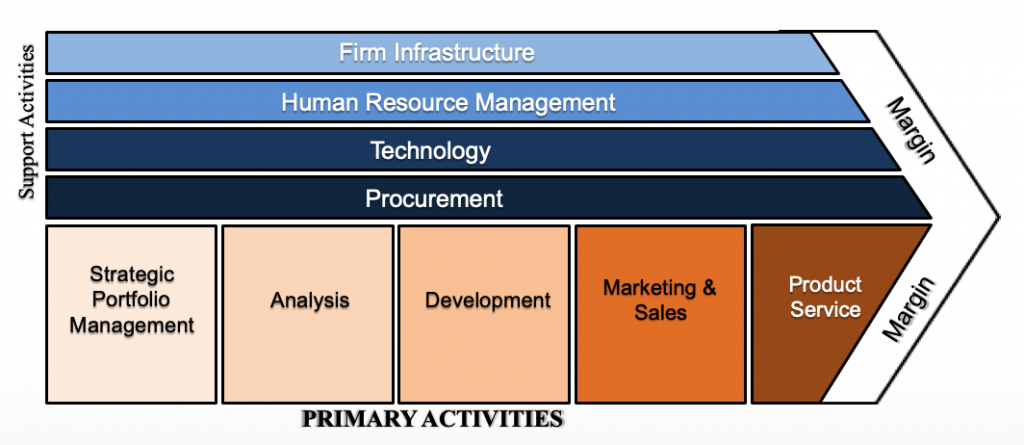Nowadays, companies like Audi and HSBC use IT systems in everything they do. Does that make them more IT companies than banks? Most would agree that HSBC is a bank just as Audi a car manufacturer. But what about digital banks such as Chime or companies offering digital products? In digital companies, most of the employees work with developing software. Are they not, therefore, more IT companies? No, they are not but their primary activity is software development.
Porter, in introducing his famous value chain model, divided the activities of a company in primary and support activities. The primary activities are those that are of utmost importance in adding value and giving the company a competitive advantage. Support activities, on the other hand, are those that support in making the primary activities more efficient.

The software development process of digital companies has moved from being a support activity to become a primary activity. Perhaps one can even state that one of the distinguishing features of digital companies is that their value chain is permeated with software development.
Just as a car manufacturer seeks to continuously improve their manufacturing processes, digital companies must continuously improve their software development processes. Failing to do so, could result in lagging in an ever competitive business environment that threatens their very existence.
How would the value chain of a digital company look like? Digital companies do not have raw materials and components to be managed with inbound logistics. Rather, they have to consider what to develop, based on data on for instance, user behavior, competitors offerings, and trends. The inbound logistics of all the ideas are managed as a strategic portfolio. When decision has been taken to realize an idea, business analysis commences. The analysis serves to provide sufficient basis, based on for example feasibility and financial viability, to take a decision. If a positive decision is taken, the feature becomes an item for the software development process. With the new feature in production, data is gathered and used as input for product service such as bug fixes and minor improvements. Marketing and sales remains the same for the digital as with original value chain.

In light of this context and value chain, two observations can be made.
- Many software development processes begin when the IT team has been given a set of user stories to develop. Although analysis is part of the value chain, it is treated as a separate function. One way this is expressed is in that mostly developers use Jira for tracking issues whereas the business analyst do not. If one seeks to improve the value chain – the process from idea to service – data is required from all parts. Otherwise, the improvements will be confined to just one part of the value chain.
- Some digital companies, apply agile methodology but for its software development. When the agile methodology is confined to the IT department, the organizational structure of the company holds the benefits of agile hostage. Digital companies need agility across their value chains. By restricting agile methods to pure software development, the benefits of for instance, agile business analysis are lost.
In short, by re-thinking the value chain of digital companies, opportunities for data-driven improvement of idea-to-service process, resulting in better agility and efficiencies in digital companies.